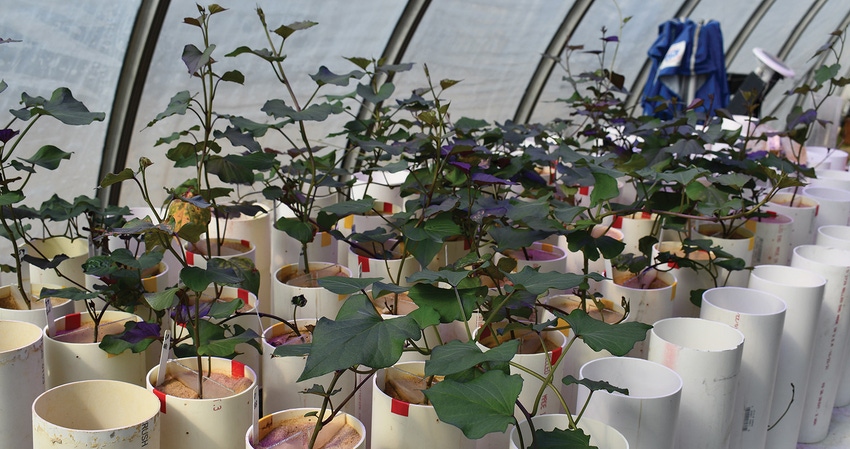
Arthur Villordon, professor with the LSU AgCenter Sweet Potato Research Station, says air and soil temperatures are important considerations for planting.
“Assuming the plants are available, we recommend planting as soon as the soil temperature at the 4-inch depth is at 65°F or greater for at least four consecutive days,” he said. “In North Louisiana, the ideal planting time for most years is from the middle of May to the middle of June. For South Louisiana, the planting can start as early as May 1st.
“If the crop is planted too early, there is potential for injury due to exposure to low temperatures, resulting in reduced vigor and plant stand. On the other hand, planting after June 30th is typically associated with increased temperatures that can slow down plant establishment as well as a potentially shorter growing season.”
Sweet potato characteristics
Don Labonte, professor at the LSU School of Plant, Environmental, and Soil Sciences, also leads the LSU AgCenter Sweet Potato Research Station's Breeding Program. He notes that growers want the basics – higher yield, better disease resistance, less skinning, and consistent shape.
“We have some very clear objectives," Labonte said. "One is breeding for guava root-knot nematode. If introduced, it can have devastating consequences on the sweet potato crop. We have discovered resistance. Now the trick is to put this resistance in a variety that approximates all the good attributes of our current commercial offerings.”
Creating a variety resistant to diseases produces a quality yielding fruit, and tolerates the southern hot, high-humidity climate can be difficult. Most people want a resistant variety but don’t want to lose any of the other qualities like yield or shape.
The group is also addressing higher yield and great shape without more inputs. Several new lines in trial seem to meet this demand, according to Labonte.
"When we improve efficiency by higher yields, we minimize these other pressures," he said. "We are also working on a tougher skin variety – one that allows us to harvest more quickly with less labor."
The skin still must have appeal to the growers and customers who buy the product on the shelves, he noted.
About the Author(s)
You May Also Like




